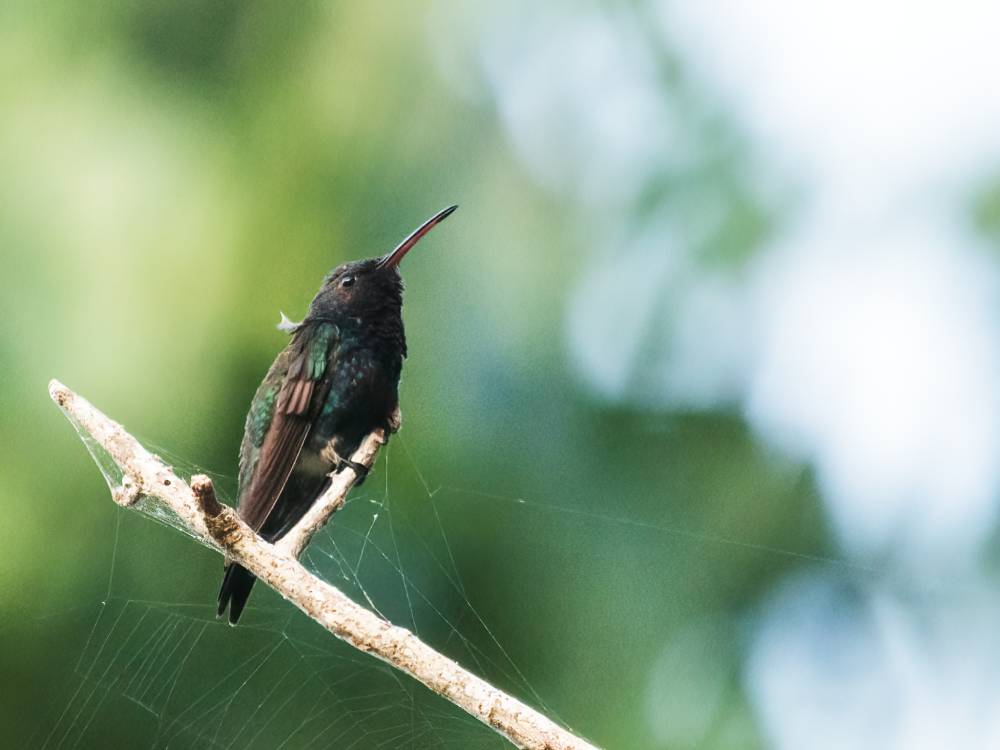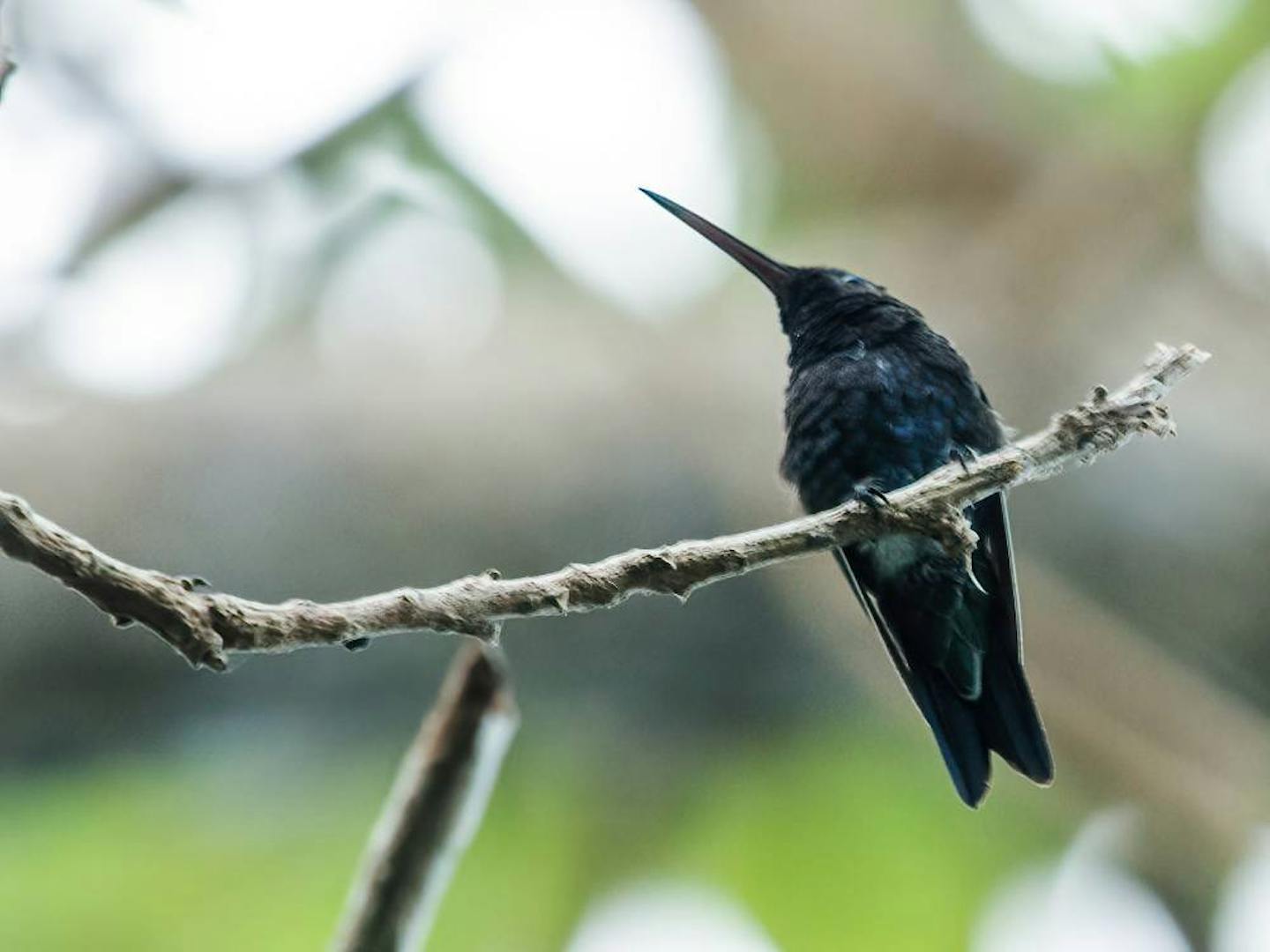Sapphire-bellied hummingbird: dazzling pollinator of the mangrove forest
- Nature Conservation
- Land Conservation
- Wetlands
- Birds
- Pollinators
- Blue Carbon
- Mangroves
- Southern America Realm
Each Wednesday, One Earth’s “Species of the Week” series highlights a relatively unknown and fascinating species to showcase the beauty, diversity, and remarkable characteristics of our shared planet Earth.
Across the northern coast of South America and stretching along the eastern edge as the jungle meets the sea, are mangrove swamps flourishing with biodiversity. These trees, partially on land, are also partially sunken in water that is both fresh from rain and rivers and salinized from the ocean’s tides. Such a mix has allowed species to evolve here that are found nowhere else on earth. One of the smallest of these is the sapphire-bellied hummingbird, Chrysuronia lilliae. Their small size and wetland environment have made them difficult to study, but what is known about these birds is that they are vital pollinators to an essential ecosystem.
Sapphire-bellied hummingbirds are the flagship species of the Amazon-Orinoco-Southern Caribbean Mangroves ecoregion, located across the bioregions of Amazon River Estuary (NT16), Guianan Forests & Savanna (NT21), and Venezuelan Coast (NT23). Shadowed underneath canopies of leaves, these hummingbirds might look dark and their feathers dull, but once in the sun, the brilliant iridescent colors of their plumage shine. Bright green at the top of their heads turns to a shimmering turquoise, followed by an intense and luminous blue and violet taking over their bellies, giving them their name.
Sapphire-bellied hummingbirds reach a maximum size of 8.9 to 9.4 cm and a weight of 4.3 grams. They can flap their wings around 60-80 per second, hovering over blooming flowers as they eat. A short straight beak with a black upper mandible and pink lower mandible contains their forked tongues which when dipped into a bud, automatically separate and suck in the sweet nectar.

Like all hummingbirds, sapphire-bellies occasionally munch on flying insects and spiders, but they are specialized for feeding on flower nectar and it is this skill that makes them an important cog in the wheel of their ecosystem. Drinking up to two times their body weight per day, sapphire-bellied hummingbirds move from plant to plant, carrying pollen as they travel. This makes them effective pollinators, helping to pollinate many of the plant species that make up the mangrove ecosystem.
Not only does this habitat give life to the species that reside within it, but it also provides the rest of the planet with the ability to sequester carbon on a mass scale. Known as ‘blue carbon,’ mangrove forests have the potential to store about 2.5 times as much CO2 as humans produce globally each year.
With this astounding figure, it is apparent that protecting wetland species such as the sapphire-bellied hummingbirds is a natural climate change solution. However, it is estimated that only 50-249 mature individuals exist in the wild. Over recent decades, a large amount of the mangrove forest along the Colombian coast has been cleared for agriculture, livestock pasture, and destroyed by industrial pollution. One of the ways in which to combat this crisis is to give forest management rights back to the Indigenous peoples who have lived in harmony with this region for thousands of years.
Two projects combine traditional knowledge with scientific innovations, Pioneering a New Model of Indigenous Led Conservation in the Upper Amazon and Strengthening Indigenous-led Mapping and Real-time Monitoring in the Upper Amazon. Both conservation efforts may indirectly help save this small hummingbird species that plays a big role in the health of our shared planet.
Use One Earth's interactive Navigator to explore bioregions around the world.
Launch Bioregion Navigator


